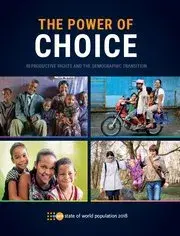Not so long ago, most people had large families: five children, on average. Where once there was one global fertility rate, today there are many, with differences wider than at any point in human history. Family size, whether small or large, is intertwined with reproductive rights, which are tied to many other rights, such as those to health and education, adequate income, the freedom to make choices, and non-discrimination. Where all rights are realized, people tend to thrive. Where they are not, people are not able to realize their potential, and fertility rates tend to be higher or lower than what most people really want.
In 1994, 179 governments endorsed the Programme of Action of the International Conference on Population and Development. They committed to enabling people to make informed choices about their sexual and reproductive health as a matter of fundamental human rights that underpin thriving, just, sustainable societies. They agreed that progress depends on advancing gender equality, eliminating violence against women and ensuring women’s ability to manage their fertility. Above all, governments agreed that matters of demographics, economic and social development, and reproductive rights are inextricably linked and mutually reinforcing. Governments also agreed that reproductive rights may be realized when all couples and individuals have the information and means to responsibly decide the number, spacing and timing of their children. Decisions about whether, when or how often to become pregnant must be made free from any form of discrimination, coercion or violence. A similar commitment is reflected in the more recent 2030 Agenda for Sustainable Development. Reproductive health and reproductive rights are specific aims under one of the 17 Sustainable Development Goals, and integral to realizing all the goals.
An interactive demonstration of the key findings of the report in English can be viewed here.


